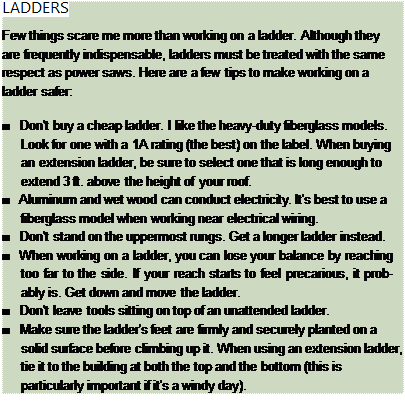STEP 8 INSTALL AND PLUMB DOOR AND WINDOW TRIMMERS
Many builders—even experienced ones—don’t like to spend time plumbing window and door trimmers. But I’ve found that this step really makes a better building. If the door trimmers are plumb, the door’s hinge-side jamb butts solidly against the trimmer along its entire length. There’s no need for shims on this side of the door. That means you save time and obtain solid, continuous backing for the jamb that supports the full weight of the door. If the opposite trimmer is also plumb, the shims you install can
share the same thickness. There’s no fussing to make shims of different sizes. Similarly, window installation benefits from plumb trimmers.
Window trimmers were installed during step 5, when the window assemblies were built on the floor deck. Full-length window trimmers are firmly attached at the bottom corners of the rough window opening, but each trimmer can still be pried away from its king stud to get the trimmer as plumb and straight as possible. Use a straight claw on a framing hammer or a flat bar to pry and a 2-ft. level to test for plumb and straight. When the trimmer is where you want it to be, secure it by toenailing through the header


with 8d nails. Make sure you toenail from both sides of the wall. To lock a trimmer in straight position, hammer a nail clip into each edge of the trimmer, as shown in the illustration on p. 108.
It’s best not to install door trimmers until after the walls have been raised and braced. This way, each trimmer can be measured and cut to fit snugly up against the bottom of the header.
I carry two straight studs to each opening, hold them in position under the header, and mark them to length. When the trimmer has been cut for a snug fit, secure it to the king stud with a single 16d nail driven near the center. Don’t drive any more nails, because you will need to tap the 2 x in or pry it out slightly to get it plumb. Test for plumb with a 6-ft. level. When it is plumb, drive toenails through the header and into the trimmer, then toenail the trimmer to the bottom plate.
Finish by getting the trimmer straight, using nail clips, if necessary. When the sheathing is installed, you can lock the trimmers in place by nailing through the sheathing and into the trimmers’ edges.









Leave a reply